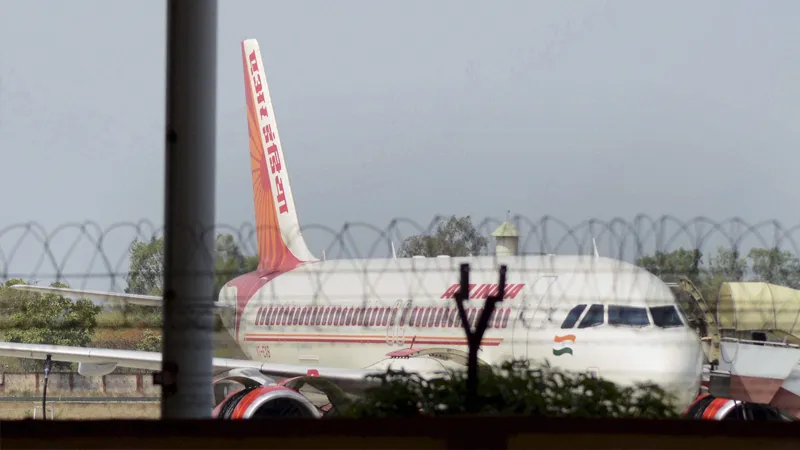In a recent interview to Wall Street Journal, Prime Minister Narendra Modi was asked a question on the public sector and privatisation. A phrase from his long answer — “Both the public and private sector have a very important role to play. You can’t suddenly get rid of the public sector, nor should you” — has been interpreted and analysed over and over again.
To Modi sceptics, this is proof of his government’s abdication of “big bang reforms”. To others, including some leading economists who are supportive of the Modi government, nothing in his record in Gujarat suggested an advocacy of privatisation in the first place, and so this is a pointless debate.
Where does the reality lie? Frankly, there are many layers to this. For a start, in the government there is understandable impatience with those who impulsively equate reforms with simply privatisation and argue that anything other than a quick dismantling of public sector companies and a “Thatcherite revolution” would amount to Modi betraying his mandate.
Such reasoning is over-the-top and ignores solid economic achievements of the government, it does not mean, however, that Modi and his team cannot legitimately be asked questions about privatisation. In the past two years, the finance minister has spoken more than once about “strategic disinvestment”. This is a code for privatisation, and for a controlling and management stake in a company going into private hands. In contrast plain “disinvestment” has the government selling only small stakes.
Why has “strategic disinvestment” not taken place? One suspects there are three reasons. First, the government believes its commitment to private enterprise needs to be seen not merely in terms of government companies it privatises but also in terms of sectors that were state monopolies and which it has opened for private investment. Defence manufacturing and railways are two examples Modi cited to the Journal. In mining, this government has taken the firmest steps in 40 years to end Coal India’s monopoly.
Yet, being open to private business is not the same as privatisation. Here the government runs into its second roadblock: the sense in the BJP that the sell-offs of the early 2000s rattled employee unions and contributed to a negative vote against the NDA government in 2004. This perception may be exaggerated, but it exists in the hearts and minds of senior BJP politicians. It cannot be wished away.
As such, mechanisms to make privatisation that much more palatable, including by offering discounted shares to common investors in a public offer that runs in parallel with a strategic sale, have been speculated upon. There is the issue of valuing physical assets (such as land) of a company as opposed to its business and brand value. Legacy controversies related to these plagued the privatisation ventures of the Atal Bihari Vajpayee government. Thinking on all this has now been delegated to NITI Aayog. In due course a report will arrive. Admittedly, there is no political urgency because this is not seen as a political priority.
That brings us to the third point. The political appetite for rapid and wholesale privatisation is at its lowest since the late 1980s-early 1990s. This is a global phenomenon, not just limited to India. It is a sentiment evident in Britain and even the United States, where Donald Trump, to quote a related example, has emerged as the Republican presidential candidate most opposed to free trade in several decades.
India has not been immune to this. Like elsewhere, the impact of the financial crisis of 2008 and the consequent slowdown in the economy is undeniable. Take the steel industry. In the mid-2000s, with Indian steel companies buying international competitors, with iron ore and steel prices surging, with Steel Authority of India Limited (SAIL) being challenged by private players, it was possible to ask questions as to why SAIL and its component steel plants should not be privatised.
Today, with the commodities super-cycle having ended with a rude thud, with the steel industry in a crisis caused by Chinese dumping, with even the iconic Tata Steel getting rid of assets and threatening job cuts in Europe, no politician is going to risk a conversation on privatising Indian steel plants. If and when the context changes, the discussion may be revived. For the moment, it looks a long way off; there is no serious will to sell and there are no serious buyers anyway.
While the grim mood in commodities and heavy industry is leading to caution, the government’s slow movement on privatising its assets in the services sector, for instance, is less explicable. Air India is a case in point. It remains a burden on the tax-payer. Not even the recent phase of operational profits — a product of little more than the sharp decline in international crude oil prices — can take away from that hard reality. At some stage, the Air India muddle will have to be tackled, and there remains a compelling case for privatisation.
Indeed, as the Modi government has found, the Civil Aviation Ministry’s twin role as owner of Air India and (through the Directorate General of Civil Aviation or DGCA) as regulator of the aviation industry is simply not sustainable. It has allowed the bureaucracy to virtually sabotage reform. Two years into Modi’s term, India is still saddled with the ridiculous 5/20 rule, which discriminates against newer airlines that wish to fly internationally. It also has to deal with a civil aviation policy that has sections specifically designed to protect DGCA’s fiefdom.
Advance in this sector would require, as senior members of the government have correctly identified, the replacement of DGCA with a truly independent regulator. It would also require the privatisation of Air India.
This commentary originally appeared in Hindustan Times.
The views expressed above belong to the author(s). ORF research and analyses now available on Telegram! Click here to access our curated content — blogs, longforms and interviews.
